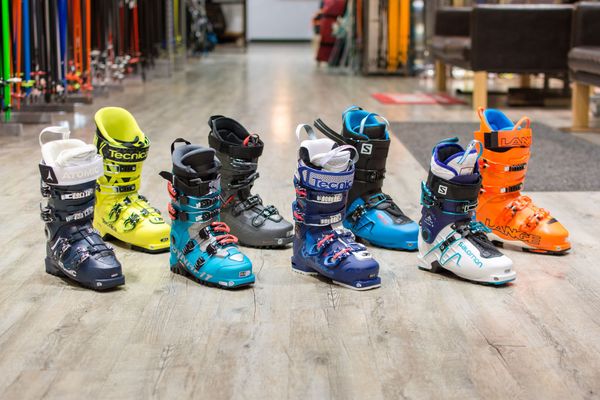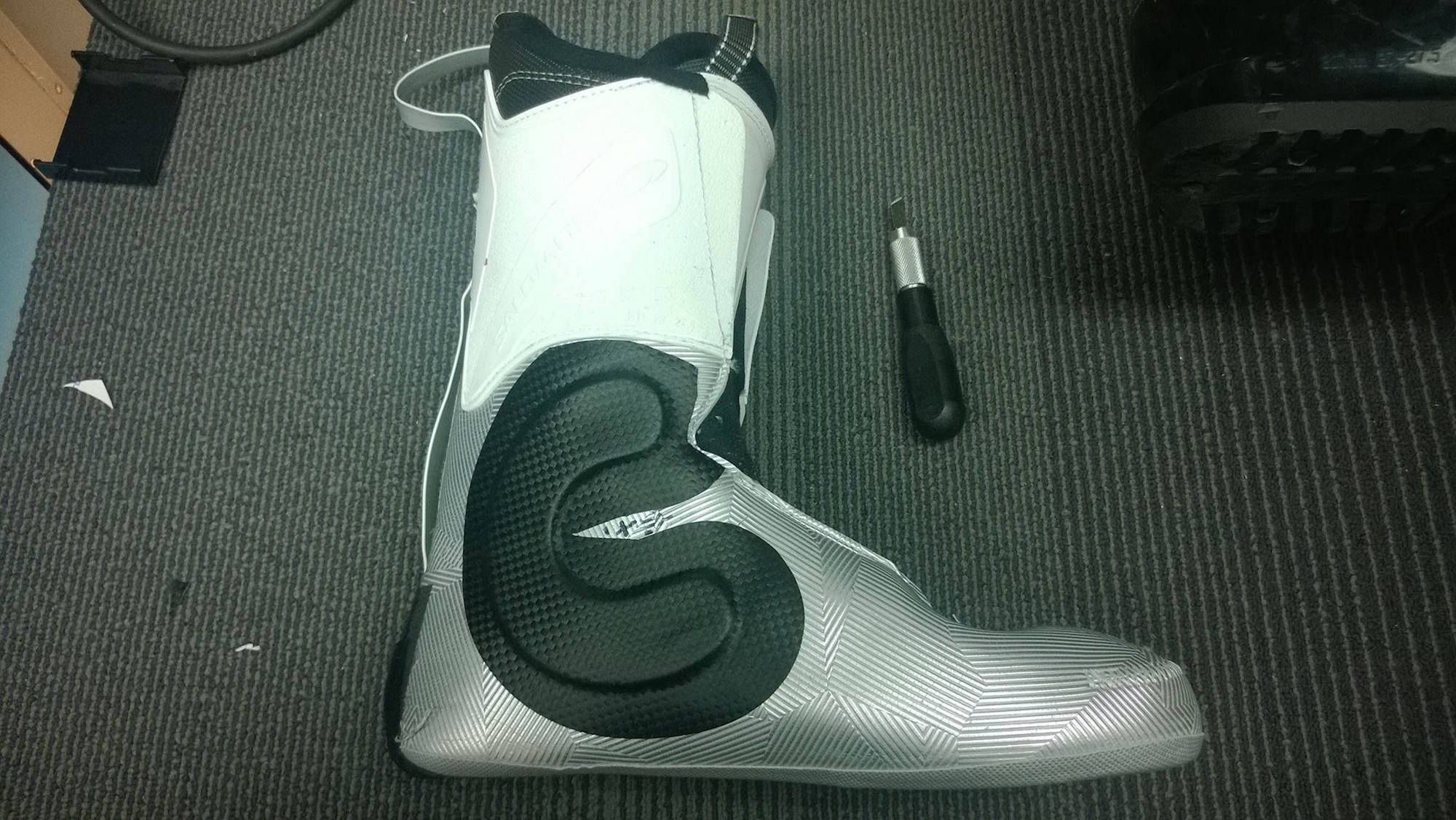


There’s no doubt you have heard of bootfitting before. Whether you're at your third adjustment on your fifth pair of boots, or your friend that's constantly telling you about how perfect the adjustment is on his boots, bootfitting is getting more and more attention amongst backcountry skiers. There are several reasons for enthusiasts to have their boots fitted to their feet, whether it is for more downhill precision to negotiate quick turns in a steep couloir, for more comfort on a 10km (6 miles) approach, or because you are subject to chronic frostbite.

In Quebec, there is no shortage of good bootfitters. EstSki went to "Mon Bootfitter ", on the South Shore of Montreal, and had the opportunity to document the boot transformation process, as well as take note of some generalities about those pricey shoes.
Although bootfitting can do wonders, it's always best to start with a boot aligned to the geometry of your feet. As a rule, Quebeckers' feet are closer to a European foot, which is narrower than those of our neighbours to the south. Test a few models in store, at the ski hill or even better, in the backcountry and you will immediately identify a brand with which you should start.
When choosing a boot, be aware that the interior volume varies greatly from one manufacturer to another. The following table presents the trends observed by major manufacturers, with variations between the models:
| Volume | Manufacturiers |
|---|---|
| Petit | Dynafit, Scarpa, La Sportiva, Atomic |
| Moyen | Dalbello, Salomon, Rossignol, Technica |
| Grand | Black Diamond |
| Variable | Scott |
Once you've made the compromise between the boot of your dreams (we take the one advertised by the Lange girl), the one that suits you best and the one that won’t break the bank, you could benefit from increased comfort and precision by using services of a Bootfitter. There are many ways to improve your experience, as needed.
The first step is to analyze your foot, to understand where benefit can be brought, on the assumption that position of the foot is not optimal for skiing or skinning. In this case, the goal is to correct the formation of an bump commonly called onion in Quebec towards the outside of the foot. We begin by checking your feet's alignment as well as the distribution of support. This diagnosis helps to understand how your feet works within the boots. Everything else comes from it.

Adjustments can be made to the three elements that make up the ski boot: the sole, the shell and the liner.
Good soles that are well adapted to the morphology of your foot and, if needed, that offer good compensation can improve your ski performance and your comfort. In our case, we redefine the foot support to correct its misalignment to prevent the formation of an onion. There are different types of insoles for each sport. Thus, soles for skiing will be different than soles for telemark, which themselves will be different than those used for hiking.

In the skiing world, as many manufacturers of boots offer small interior volumes, some of us will have the boot "punched" to enlarge interior volume in specific locations so that the foot can support weight efficiently.
The modification of a boot shell requires expertise since the type of plastic used will change from one brand to another. Different components will ask for different heating temperatures and applied pressure. Doing it wrong could definitely damage your boots in the long term. Torch and hammer are not recommended if you don’t want to end up with a boot bursts in the middle of a couloir.

It is possible to make adjustments to the liner, mainly to reduce your feet's movement inside the boots while riding or skinning. Usually, pieces of foam are installed to fill the gap between the foot and the liner. Depending where they are installed as well as their thickness, density of the foam should vary.

Obvisouly, each case is unique. Since a pair of touring boots cost an arm and a leg, we recommend talking to your bootfitter before attempting anything by yourself with your boots. Some vendors will offer you to have the liners molded or even to put the boots in the oven for a few minutes, see if they fit you better. However, some boots are not made to be molded quickly by heat. Make sure you have the advice of a professional who knows your boots well, but above all, who understands the peculiarities of your feet!

Thanks to Mamar ''Mon Bootfitter'' for for the time he spent with us and for the pictures.
Apprends les compétences essentielles pour prévenir les avalanches et assurer ta sécurité en montagne grâce au meilleur programme international de formation WEMountain. Inscris ton courriel ci-dessous pour recevoir un code promo de 20 % par courriel :